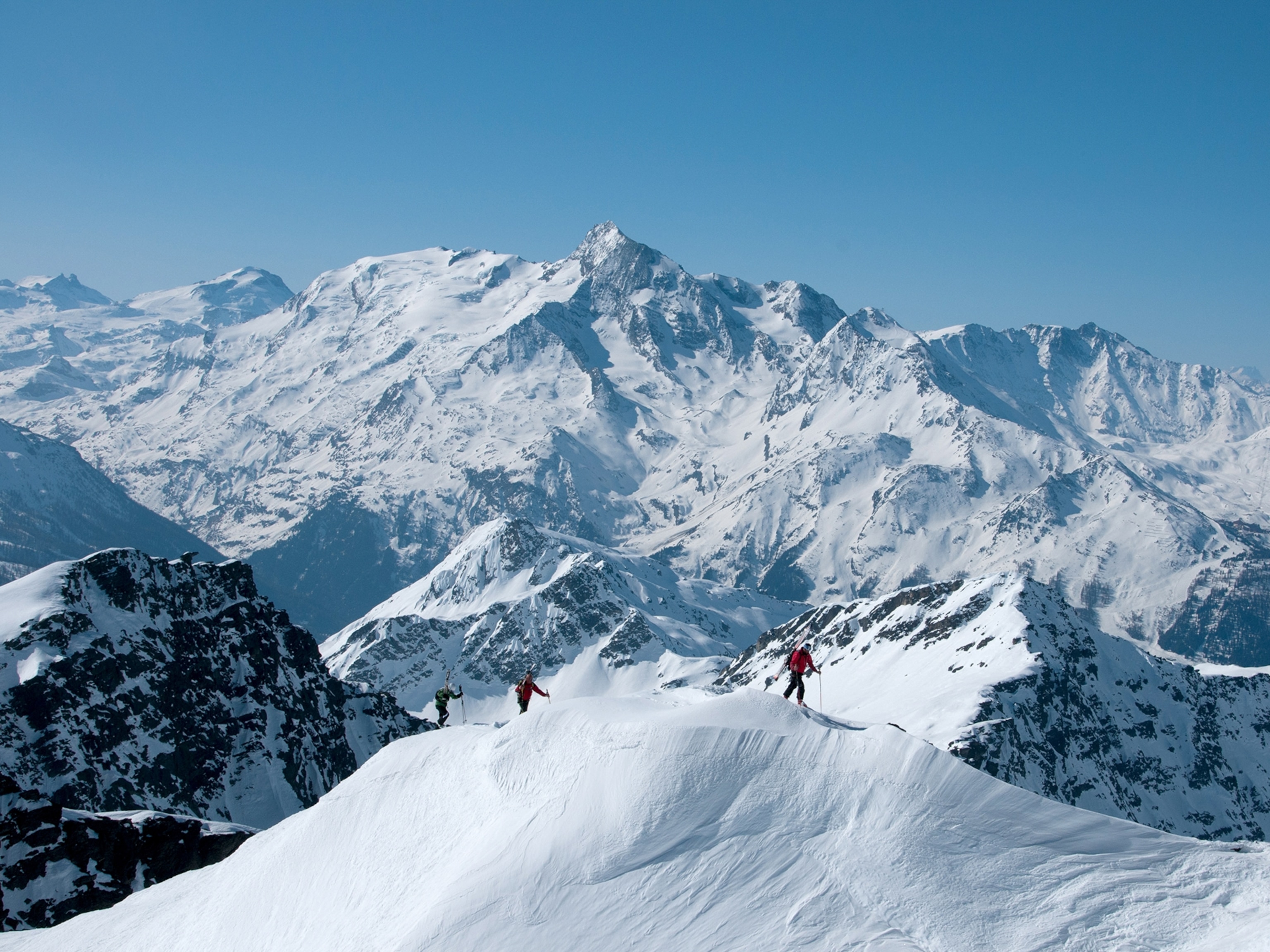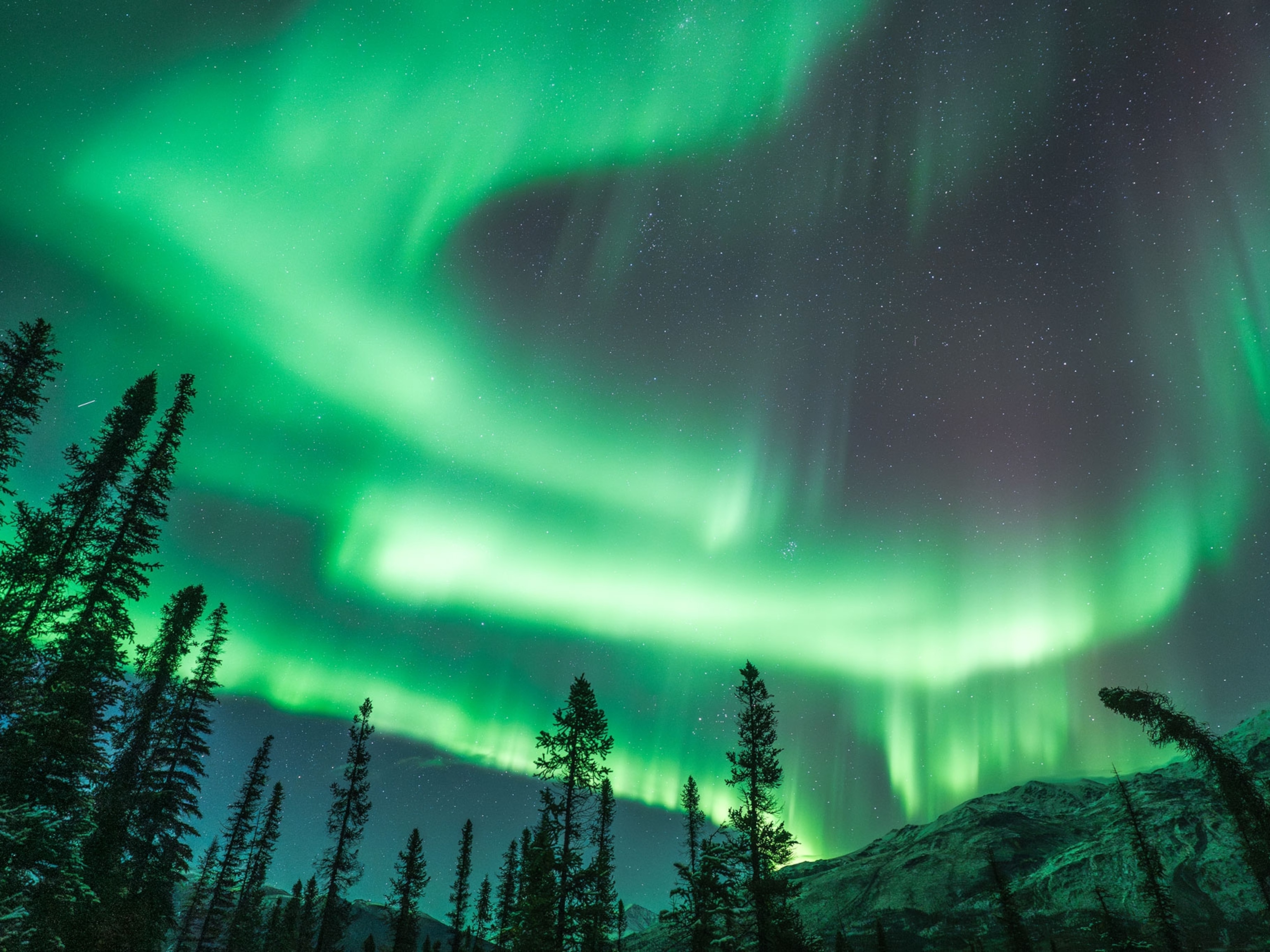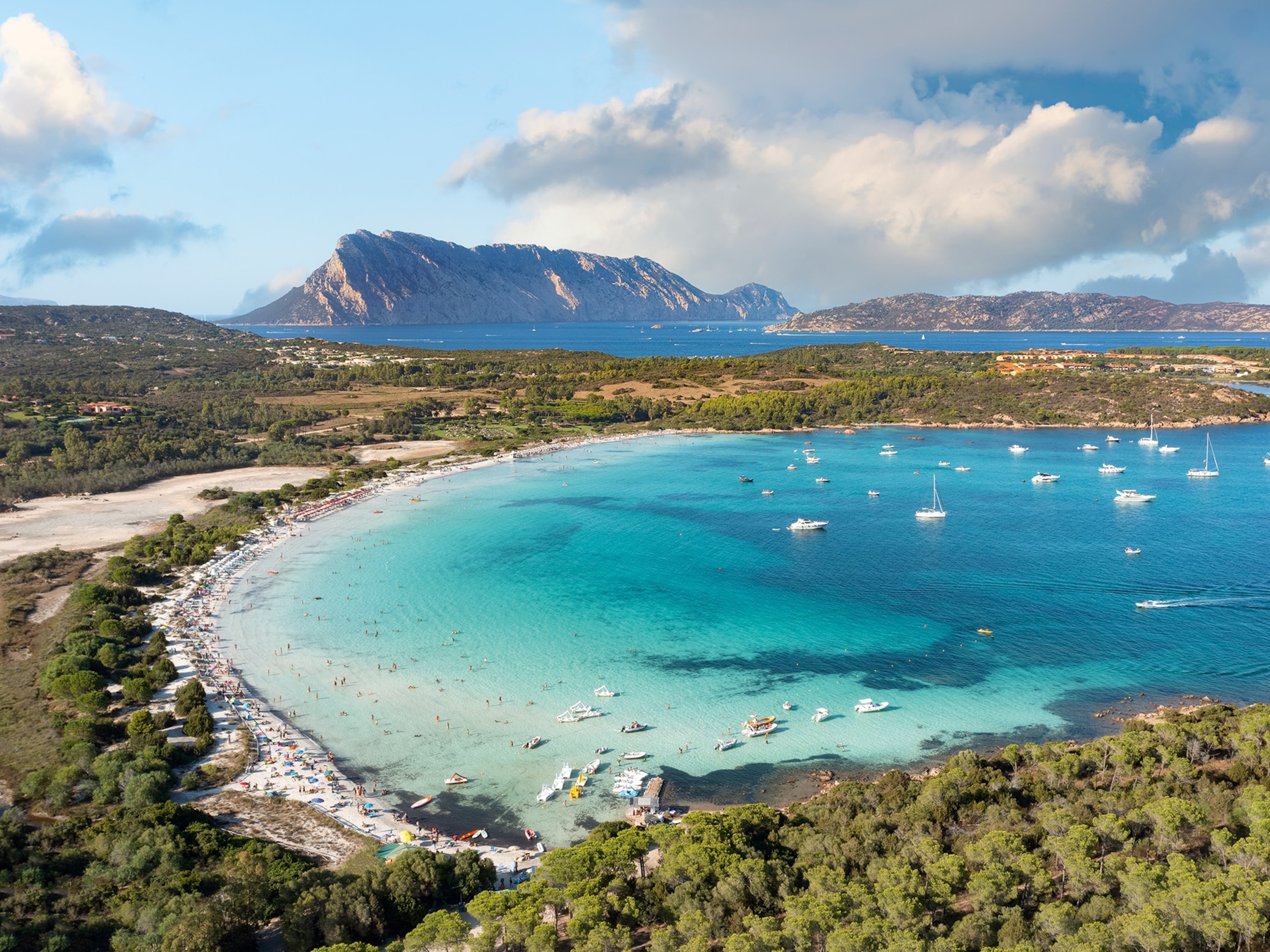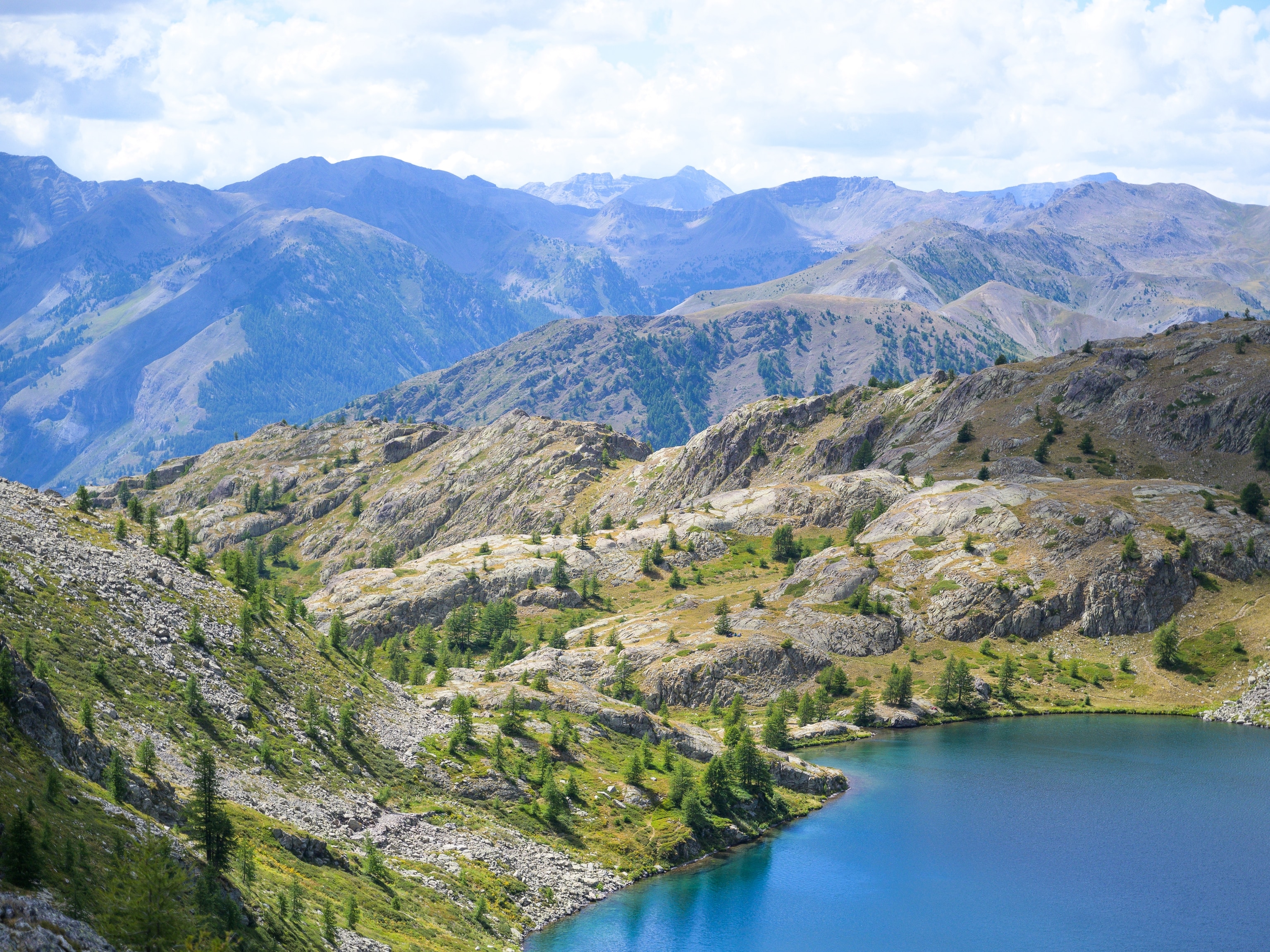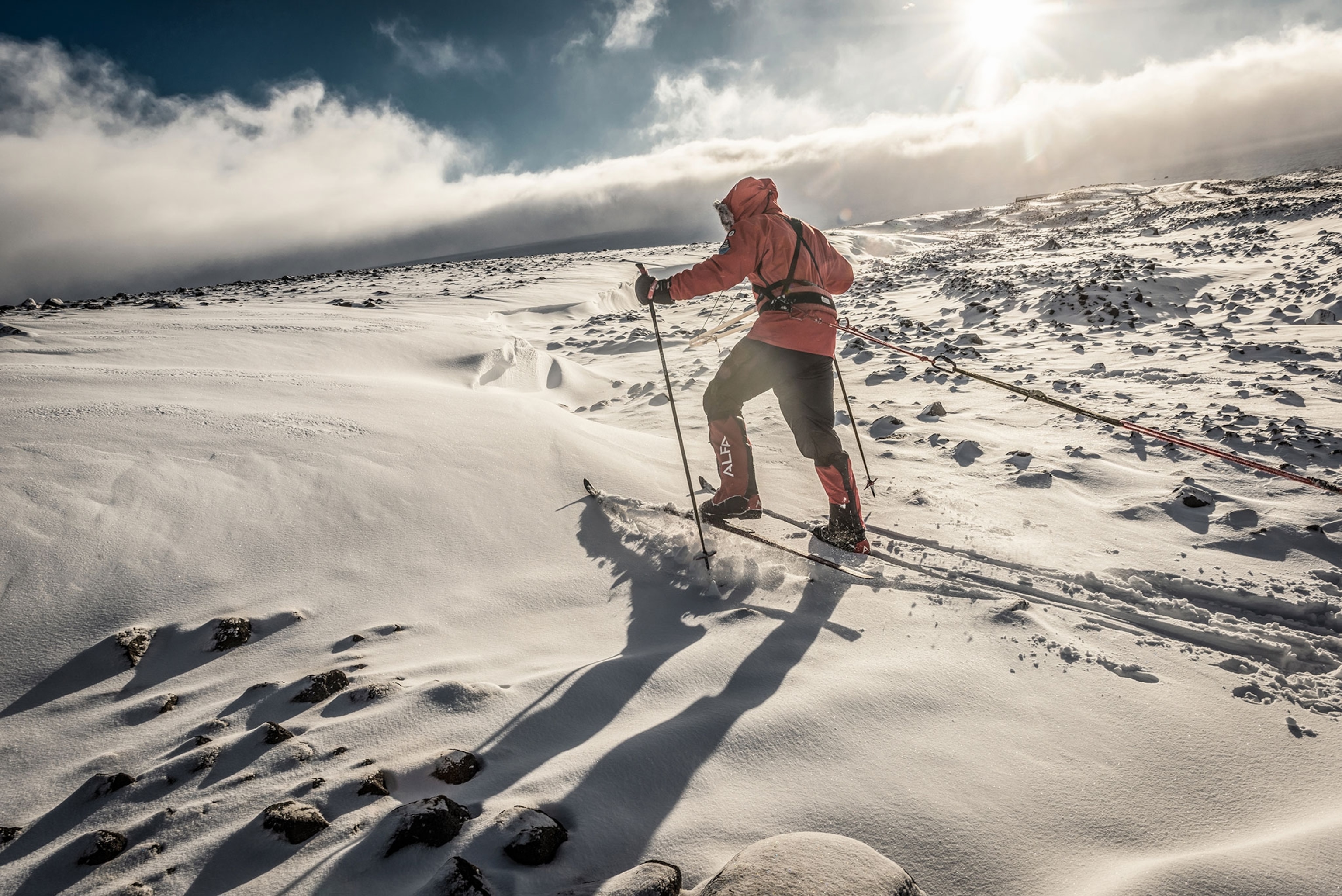
Explorer crosses South Pole in epic race across Antarctica
Two men are dragging heavy sleds over the frozen continent's forbidding landscape in an extreme duel to make exploration history.
Right now two very different men, alone yet forever linked, are in a race against each other and history across the bottom of the world. One, Colin O’Brady, is a young American with an inspiring story and a knack for self-promotion. The other, Louis Rudd, is a middle-aged Englishman carrying on the grand tradition of his nation’s gentlemen explorers. Both are attempting to be the first person to ski across Antarctica solo, unsupported, and unaided. Only two men have attempted it, both in the past two years. One quit after 52 days, the other died.
On December 12, O’Brady passed the South Pole, roughly a day ahead of Rudd, marking the midway point in the brutal journey.
In the Great White Queen, as polar explorers call Antarctica, there are places where planes cannot reach and rescue-blocking whiteouts can last for days.
This isn’t the first time the planet’s coldest and most remote continent has hosted an epic race. In 1911, during what’s known as the Heroic Age of Antarctic Exploration, Norwegian Roald Amundsen and Briton Robert Falcon Scott set out in competing expeditions to be the first humans to reach the South Pole. After a two-and-a-half month overland journey, Scott arrived there to the bitterly disappointing sight of the Norwegian flag—Amundsen had arrived a month earlier. Scott and his four companions did not survive the return journey. Their frozen bodies were discovered in their tent nearly a year later, only 11 miles from their resupply cache. Their competition, one of history’s greatest races, captivated the world.

Recent years have seen a flurry of heroic, self-supported traverses across what may be the planet’s most treacherous landscape. The successful ones have involved supply caches, multi-party groups, or speed-boosting kites. But a solo, unsupported crossing by human-powered means—what polar explorer Pen Hadow called the “hardest form of travel quite possibly on the surface of the Earth”—remains unachieved. O’Brady and Rudd both hope to change that. Now an Antarctic competition is once again captivating the world.
Rudd, 49, is the more experienced of the two, having already skied more than 2,500 Antarctic miles on previous expeditions. A 33-year veteran and current captain in the British Army, he most recently led a five-man team of British veterans across the continent in 2016 (with a resupply at the South Pole). After multiple tours in Afghanistan and Iraq, Rudd put the challenges of his current trek in perspective when he told The New York Times, “Nobody’s shooting at me.”
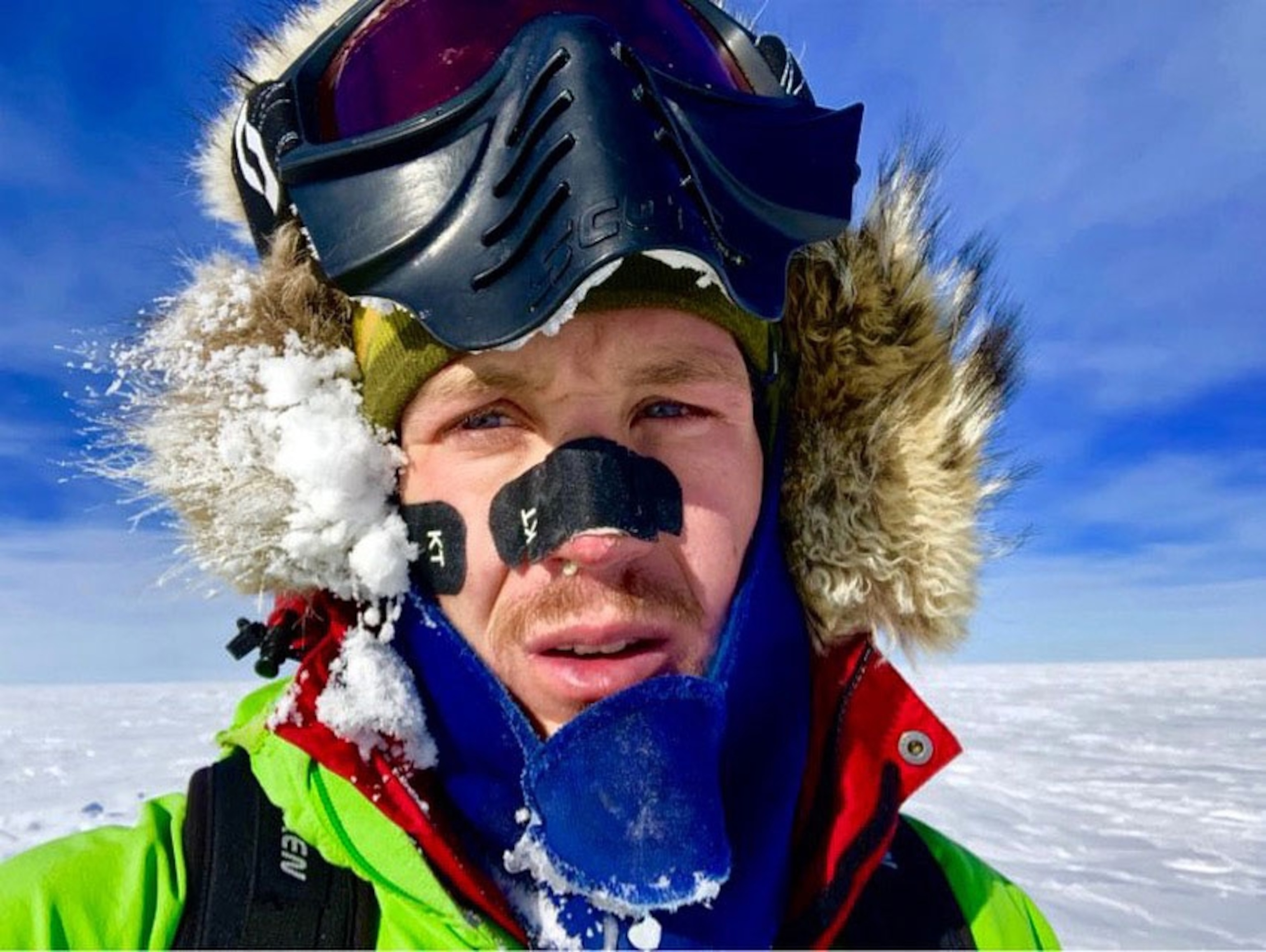
After Scott, and Ernest Shackleton, who first conceived an Antarctica traverse, and the previous two adventurers who attempted the crossing, every one an Englishman, Rudd told the British newspaper The Daily Telegraph, “It’s important a Brit cracks this first.”
They hugged farewell, possibly their last contact with another person until their journeys conclude—or, if something goes awry, ever.
It caught everyone by surprise when O’Brady, 33, a relative newcomer to the polar adventure community, suddenly declared in October his intention to attempt the crossing as well. It might be easy to discount the fresh-faced neophyte with the vocabulary of a self-help guru, but O’Brady has more than the power of positive thinking going for him. Told he might never walk again after a near-death accident burned his legs and feet in 2008, he proceeded 18 months later to win the amateur division of the Chicago Triathlon and spent the next six years as a professional triathlete, including as a member of Team USA. In 2016 he turned his sights to mountain climbing and promptly set the world record for the fastest completion of the Seven Summits, climbing the highest peak on each continent, and the related Explorers Grand Slam (Last Degree). This past summer he set the speed record for the 50 High Points Challenge, summiting the highest point in each state in the U.S. in 21 days. The man knows how to meet a challenge.
Ever the cheerful and social-media savvy self-promoter, O’Brady gives popular Ted talks and claims to be the first person to “Snap,” or use the social media site Snapchat from the summit of Everest. He posts daily updates from the expedition to his 66,000 Instagram followers. Meanwhile, Rudd phones-in updates which appear on the website of his sponsor, the British outdoor clothier named, of course, Shackleton. Both men are raising large sums for charities—Rudd for veterans, O’Brady for children’s health.
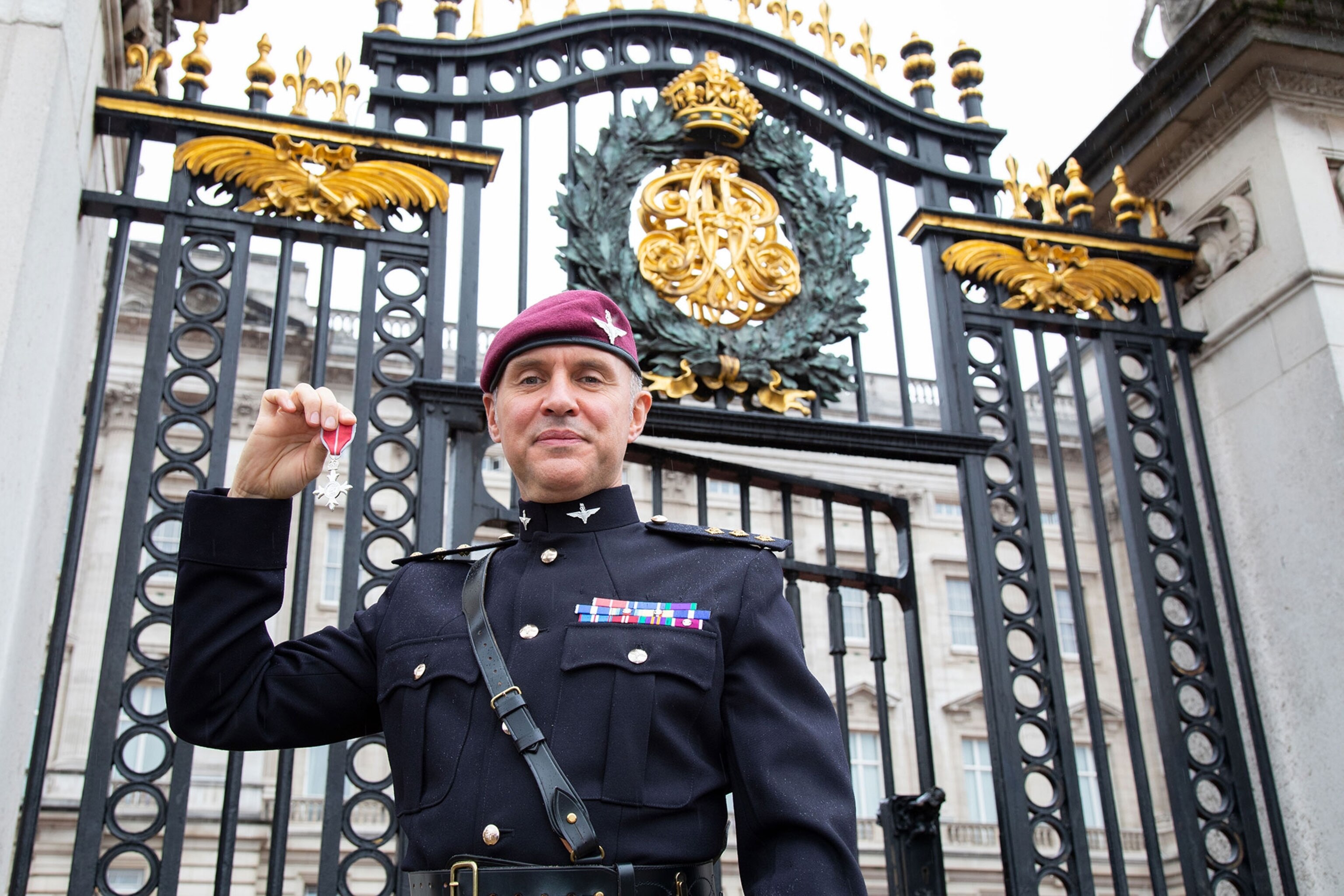
They met face to face for the first time in late October while making preparations in Punta Arenas, Chile. Any initial tensions between them dissolved over drinks in a cellar bar. On November 3, a Twin Otter ski plane deposited them about a mile apart on the Ronne Ice Shelf, a few miles out from the beginning of the Antarctic continent. They hugged farewell, possibly their last contact with another person for over a month until they reach the research station at the South Pole—or, if something goes awry, ever.
They both struggled those first days with the weight of their loads—Rudd’s sled weighed 330 pounds; O’Brady’s a hefty 375 pounds.
If that seems hyperbolic, consider the case of Henry Worsley. In 2016, he was the first to attempt the solo Antarctic traverse no one had yet dared try. He made it over 900 miles, just 126 miles from the finish, before calling for a rescue flight out. He’d pushed too hard. The grueling effort siphoned 40 pounds of his body weight and he succumbed to fatal organ failure before reaching home. To some, this suggested the journey was beyond human ability.
A fellow middle-aged British military man, Worsley was the one who’d taught Rudd the way of polar navigation when they’d retraced Amundson’s route together in 2012. In one instance, when wind blew water Rudd was drinking onto his gloved hand, freezing it in an instant, Worsley imparted a vital lesson: “Get wet, you die.” When announcing his traverse plans last spring Rudd declared it, “A fitting tribute to the legacy of Henry.”
As they set out into the great white, both men had everything they needed to survive in their pulks, or cargo sleds, for the 70 or so days they expected the approximately 1,000-mile journey to take. They both struggled those first days with the weight of their loads—Rudd’s sled weighed approximately 330 pounds; O’Brady’s a hefty 375 pounds.
“The beginning was crazy,” Rudd said in one of his nightly reports posted on the website of his sponsor, Shackleton. “The weight was so heavy. I’ve never pulled anywhere near that before, and I’m not getting any younger.”
The fourth day, O’Brady posted on his daily Instagram update, “Was the first day I haven’t cried into my goggles.”
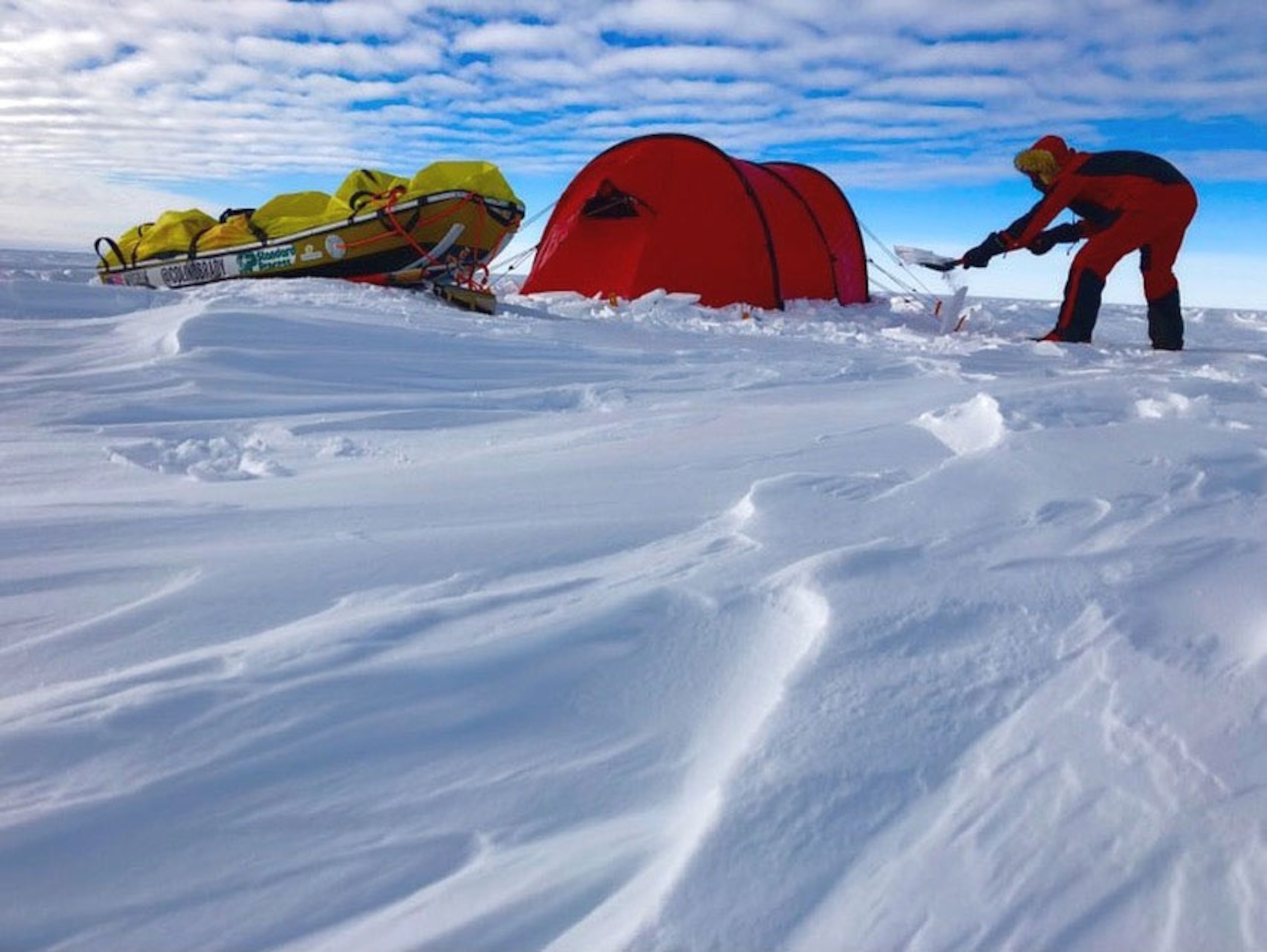
The elevation gain only made things harder—their route starts at sea level and climbs steadily to the 9,301-foot South Pole, which sits atop a 9,000-foot-thick continental carapace of ice. Still, O’Brady strategically opted for a heavier load believing the weak link of previous attempts has been inadequate food. Briton Ben Saunders pulled the plug on his 2017 attempt at the South Pole after 52 days realizing he lacked the food to finish. With a plan to devour an astounding 7,000 to 8,000 calories a day, O’Brady likes to say he’s bringing 220 pounds of food but only a single pair of underwear.
For the first five days Rudd was in front, as many expected, but a surprising thing happened on day six. O’Brady caught up and, after a brief chat, Rudd explained he let his competitor pass because he was, “Very keen to maximize the solo experience... and kept about a kilometer apart throughout the day.”
After an arduous and unusually long 18-mile day pushing each other, Rudd decided to give up trying to keep O’Brady in sight, explaining in his day’s report, “There’s still a long, long way to go and a lot can happen yet, so I’m going to stay focused on my plan. Hopefully we’ll naturally separate, it’d be better I think to be out here on our own experiencing the solo journey as it should be.”
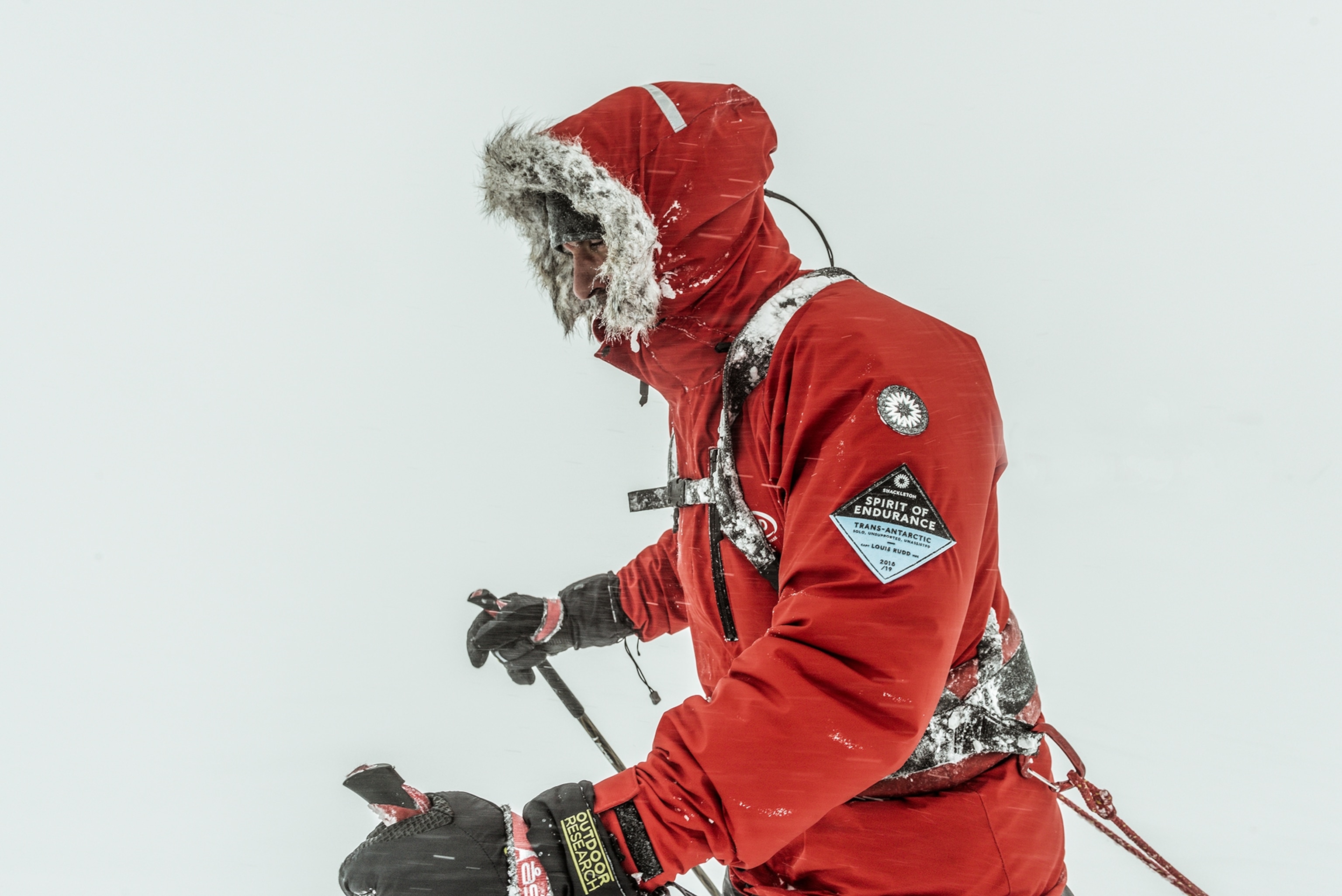
While Rudd is putting in 10 or 11 hours per day on skis, O’Brady is logging 12. When Rudd emerged from his tent the morning of the seventh day, O’Brady had already decamped and left. Rudd was relieved, saying, “It’s actually a good thing for both of us—we want to do be doing our own separate solo journeys...Now I can just focus on my expedition, my journey, and kind of do it my way. That’s what I came here for.”
The following weeks served up a medley of challenges. First came the sastrugi, or knee-high, wind-created waves of snow that can slow movement to a crawl. Then 30-mile-per-hour headwinds hit and combined with the regular subzero temperatures to produce dangerous windchills of -50 F and colder. Facemasks froze solid, breathing formed tusks of ice, and eating and drinking became a challenge. Rudd had to thaw cubes of cheese in his mouth for several minutes before they could be chewed.
Besides being the coldest continent, Antarctica is also the windiest, which leaves Rudd and O’Brady on a knife edge. Potentially fatal situations can develop in an instant. If their tents were to tear or worse yet blow away while being pitched, their survival could hang in the balance. As the wind routinely whips snow into white-out conditions they keep their heads down and ski by compass into the maelstrom.
Not surprisingly, both men have had their share of spills. On November 30, Rudd was skiing into blinding winds, blowing snow obscuring even the ground beneath him, when he pitched off a three-foot sastrugi lip, crashing face-first to the ice and snapping his ski tip (both men carry extensive repair kits and Rudd even has a backup pair of skis). Fortunately for him, his pulk stayed balanced atop the sastrugi and didn’t crash down on him from behind. O’Brady, too, tumbled repeatedly, eventually stripping the climbing skin (a strip that attaches to the bottom of skis to create enough friction for uphill movement) from the base of his ski. Without the traction afforded by the skin, pulling the heavy pulk is impossible. But the ferocious wind rendered re-adhering the skin impossible, so for the first time on the expedition O’Brady pitched his tent against the storm during the day and rested.
Losing critical gear or suffering an injury could end either man’s trip, or worse. In the Great White Queen, as polar explorers call Antarctica, there are places where planes cannot reach and rescue-blocking whiteouts can last for days.
When setting up camp in strong evening winds, Rudd ties a line to his tent and clips it via carabiner to to his pulk before even removing it from the sled. Then he very carefully takes it out, erects it, throws in all his gear, and dives in for the night. If the weather allows, Rudd also plants Worsley’s family crest flag at camp, which he’s carrying on the entire trip after being loaned it by Worsley’s widow. Rudd says he gets his tent up in 10 minutes. O’Brady takes 20 minutes, in good weather. One perilous night, with 40-mile-per-hour winds, it took 90 nerve-jangling minutes.
- National Geographic Expeditions
Once in the tent, their first task is firing up stoves in the vestibule to melt snow for water, which they store in Thermoses to keep from freezing. (O’Brady uses titanium camp pots for this; Rudd an actual tea kettle.) Both prepare protein drinks before moving on to freeze-dried dinners. While the snow melts, Rudd performs his most critical hygiene—he removes boots and socks, washes his battered feet in snow from the vestibule, dries them, and puts on foot powder and clean sleeping socks.
Procuring water from the powder-dry snow is not a fast process. Antarctica is the world’s largest desert and the areas Rudd and O’Brady are skiing across receive a scant four to six inches of precipitation a year. Though because the snow never melts—the highest temperature ever recorded at the South Pole is 9.9 degrees Fahrenheit—there’s never a shortage. To ensure their water supply, they each set out with plenty of stove fuel, around 50 pounds of white gas.
To charge electronics, like the satellite phones that are their lone link to the potentially life-saving human world beyond, they place solar panels inside the tent, which capture enough light in the 24-hour sun of Antarctic summer days to charge through nylon walls. It’s no wonder O’Brady sleeps with an eye mask, even if sleep can sometimes be in short supply. Rudd describes several nights with winds so severe he examined and stabilized his tent walls and poles hourly to ensure they held together.
Mornings present their own psychological challenges. Imagine waking in a warm sleeping bag, your tent whipping in the wind, knowing it’s at least 20-below-zero Fahrenheit outside. As Rudd describes it, “The alarm goes off and you get that sinking feeling...you know you’ve got to go out and do a full day’s slog.” (If the perpetually upbeat O’Brady ever feels this way, he doesn’t let on.) From his sleeping bag, Rudd reaches over to light his stove and begin melting snow for a 1,000-calorie freeze-dried, “porridge” breakfast. In an effort to bring some cheer, and another 500 calories a day, to his mornings, Rudd is also hauling 15 pounds of hot chocolate.
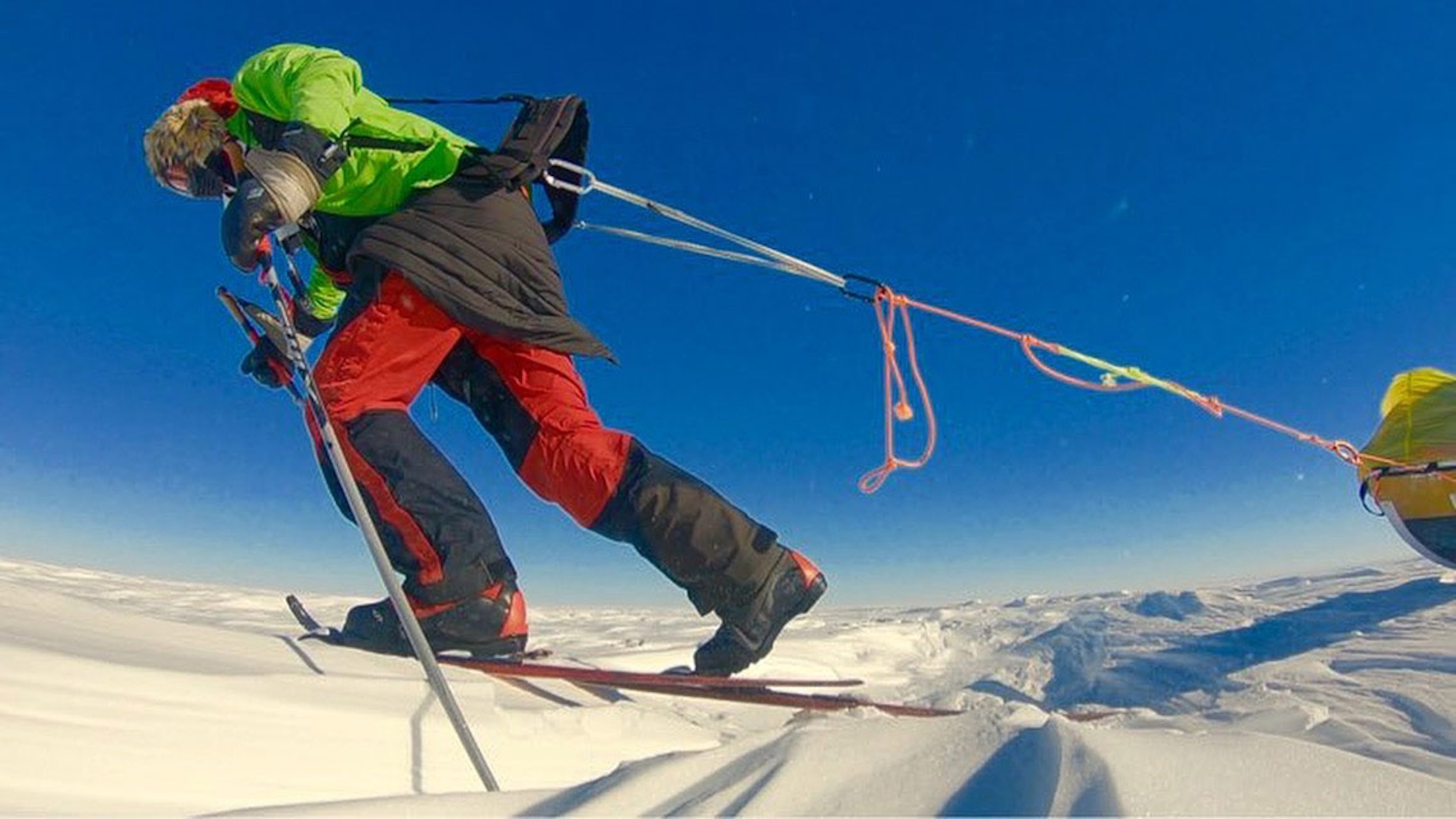
If you’re wondering how they handle another common ritual in the frigid Antarctic morn, Rudd describes dashing out of the tent to go number two as “super grim.” In lieu of toilet paper, he uses chunks of snow from the hole he digs. All told, Rudd says its 90 minutes from alarm to clicking into his skis and setting out, at which point, “It’s an urgent thing to get moving, to generate some body heat.”
By the strict ethics of modern adventure, if they accept as much as a cup of water they relinquish the right to claim the traverse as unsupported.
Where Rudd uses a “grazing bag” of nuts, salami, and cheese while skiing, O’Brady has taken a typically hyper-strategic tack. For months he worked with nutritional scientists from a whole-food supplement company, Standard Process, to develop a custom, high-calorie food unit they call the Colin Bar, designed to optimize his unique performance and recovery. He started with 280 of them heaped in his pulk. That’s four a day, or more than half the calories for his trip. Though previous Antarctic adventurers have lost teeth to frozen bars before, O’Brady is convinced that, “This stuff is magic and I’m confident will be the key to success.”
He might be onto something because, as of December 12th, he’d built a day-and-a-half lead ahead of Rudd. Both men have successfully covered more than half their hoped-for distance and the vast majority of their climbing, even with the frequent white-outs and an unusual amount of fresh snow. Before leaving the warmth of civilization, O’Brady loftily declared, “This project is for anyone who has ever been told their dreams are impossible.” As he prepares to reach the South Pole, having muscled across 580 miles of polar death zone, his mission statement is now packing a bigger punch.
On day 40 of his trek, after pushing through near white out conditions, O'Brady posted a photo at the red and white striped marker that officially designates the South Pole, which is home to the Amundsen–Scott Station, a high-tech, $150 million American research facility replete with its own heated greenhouse and indoor basketball court. But don’t expect either man to look for warmth or assistance while passing by. By the strict ethics of modern adventure, if he or Rudd were to accept as much as a cup of water they relinquish the right to claim the traverse as unsupported.
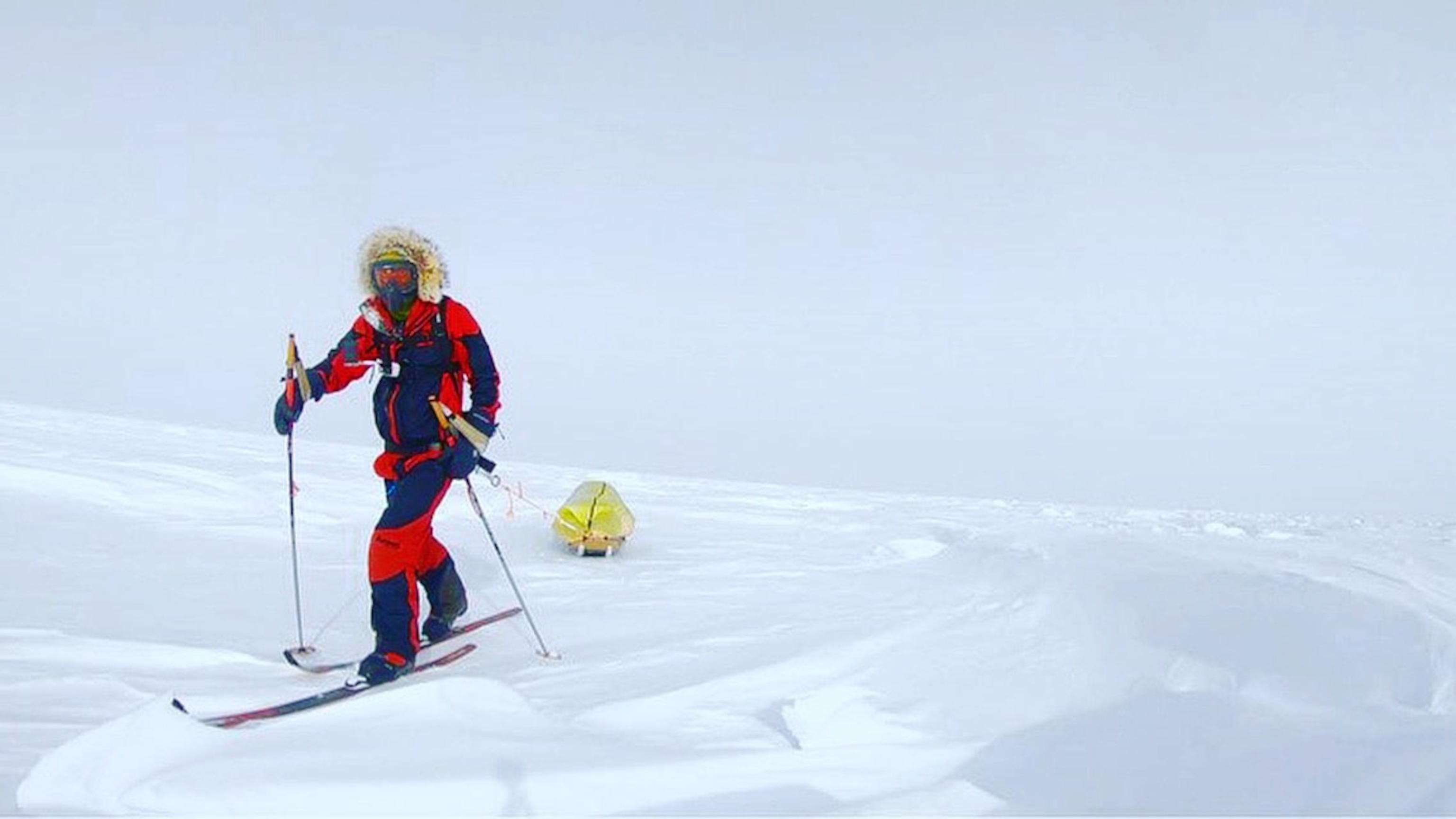
Just as important, a taste of civilization could dent the steel will needed to complete such a herculean expedition. As Rudd put it before his departure, “When I’m on the journey, I’ll accept my life for what it is. I will ski and pull. That will be my only purpose. I’ll try to forget the outside world, things like warm beds and hot showers. I’ll take the view that those things don’t exist.”
After about an hour taking a photos and “soaking in the moment,” O’Brady reattached his harness, clicked into his skis, and began pulling his sled again.
Both men will need that kind of resolve for the month and 400 miles or so of endurance that remains. Having marched from the southernmost arm of the Atlantic Ocean, they still have to ski a gauntlet of hazards to reach Pacific ice. Shortly after the Pole they will have to navigate around Titan Dome, a massive ice dome that rises above 10,000 feet. From there they march toward the Transantarctic Mountains, where they hope to thread through the peaks on glacier ramps riven with dangerous crevasse fields. Along the way, they’ll spend Christmas cold and alone, as Rudd says, “in some random spot.” At least Rudd has a “super-lightweight” present from his wife to open that he’s been carrying from the start. Regardless of conditions, the greater battle on that day may be internal.
If they can manage all of that without breakdown or mishap, they will in a month or so from now emerge onto the Ross Ice Shelf south of New Zealand and earn the title of the first humans to traverse Antarctica alone and entirely under their own power.
For his part, Rudd, appears to be increasingly feeling gravity’s pull. He has already noted his long underwear hanging more loosely on his thinning body. “I felt quite lethargic and like I was struggling,” he said in an update 60 miles from the Pole. “I guess going 37 days straight—without a proper rest day—is starting to take its toll.”
Before departing, Rudd made it clear that, “I will never allow myself to think it’s time to give up, that I can call the plane and get picked up...the only way I’m going to survive and come out of this alive is by skiing to the end point, that’s it.”
Of course, this forge-ahead-at-any-cost mentality ultimately contributed to the demise of his good friend Worsley. But if O’Brady, who so far is showing no signs of slowing down, is right that “Everyone has reservoirs of untapped potential inside of themselves,” then maybe these two adventurers have it right. However things play out between the headstrong American and the weathered Brit, new stories of adventure, suffering, and triumph are currently being written on the icy, blank canvas of Antarctica.
You can follow Rudd’s updates here and O’Brady’s here.
Aaron Teasdale, based in Missoula, Montana, is an award-winning writer specializing in adventure travel, wilderness, and conservation.



